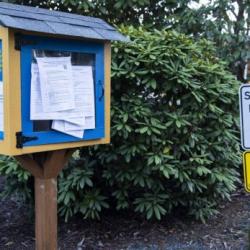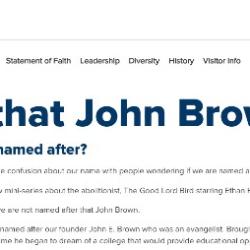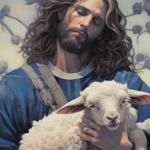William Lindsey recently quoted and discussed this comment from Owen Jones:
Why should lesbians, gays and bisexuals stand together with trans people? “Because we get beaten up by the same people!”
Yes. They’re not just talking about the calculated self-interest of “the enemy of my enemy is my friend.” They’re talking about solidarity. Or, to use a newer word that aims to shake up our complacent familiarity with that idea, they’re talking about “intersectionality.”
You’ve probably seen that word a lot this week following Patricia Arquette’s triumph and pratfall at the Academy Awards. Arquette made a passionate plea for the full equality of women, but then managed somehow to bungle the point by seeming to suggest that the rights of women should be a greater priority than the rights of other groups who have also been oppressed and bullied and preyed upon. She seemed to embrace an either/or, zero-sum framework that prevented her from seeing all of those struggles for equality as interconnected.
In contrast to that, Jones rightly points out the reason that intersectionality is not just a nice idea, but a necessary one: We have to be intersectional because the bullies are. They always have been. Bullies and oppressors and Pharaohs have never allowed themselves to be held back by an either/or, zero-sum framework. But they’ve always been very good at exploiting that idea to pit their various victims against one another.
Jeet Heer discusses this at The New Republic in “How to Make It in Conservative America (If You Aren’t White)“:
Anti-black racism, I’ve often thought, is one of the more unwholesome manifestations of assimilation. If blacks are near the bottom of the perceived racial hierarchy across North America, some enterprising immigrants find it useful to step on blacks as a way of climbing higher.
I don’t want to wade into the specific dynamics of the particular situations Lindsey and Jones or Heer discuss. I just want to highlight both of them as examples of the need for solidarity and intersectionality, and the harm that is allowed to occur in their absence.
I’ve used the schoolyard term “bullies” rather than something grander, like “oppressors,” because those are, if not identical, at least overlapping categories. And because I think the image of schoolyard bullies presents us with the intersectionality of oppressors in its clearest form. Those bullies might briefly turn from picking on the South Asian kid to go pick on the black kid, but as Jones said, all of those groups “get beaten up by the same people.” And those schoolyard bullies usually can’t even be bothered to distinguish between their various victims — they’ll apply the same vocabulary of slurs and epithets regardless of whether the kids they’re beating up are black or Indian or gay or trans.
I wrote about this a while ago when discussing the powerful video by the band Hidden Camera for their song “Gay Goth Scene“:
Oppressors aren’t interested in making distinctions between goths and gays and gay goths. Any illusion they create of a hierarchy of their targets is only that, an illusion.
It’s not possible to stand with only some people against the bullies, or — to use that theological language again — to share in God’s preferential option for only some of the oppressed. Any attempt to do that means accepting the bully’s bargain, so vividly portrayed in this video: Either join them in casting stones, or become a target of those stones yourself.
















